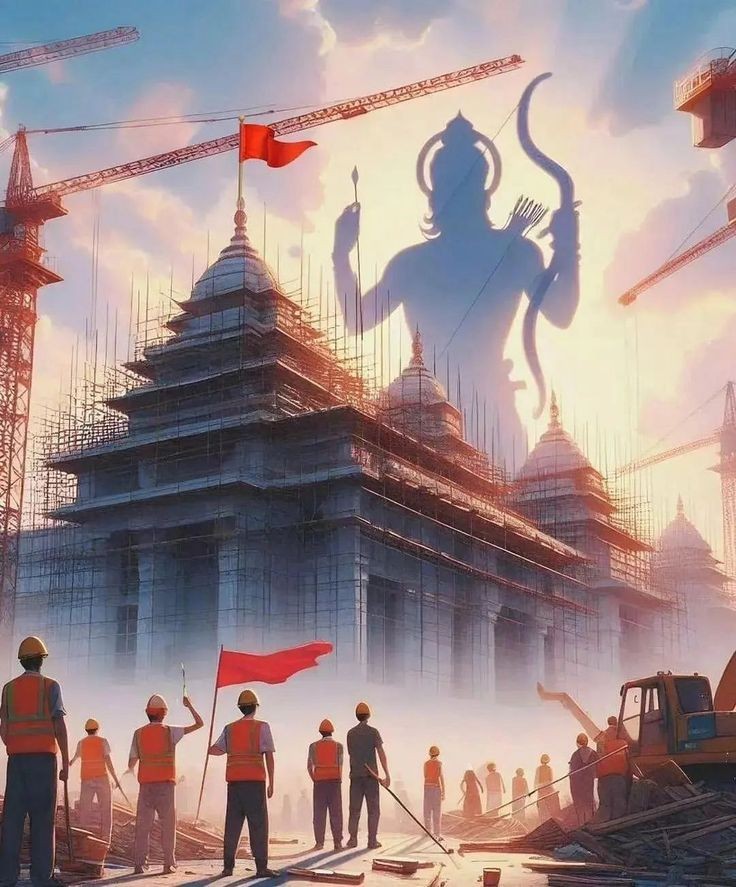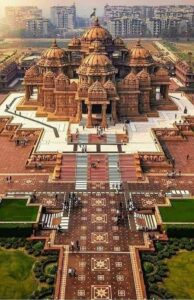
Pran Pratishtha of the Smash Sanctuary in Ayodhya is ready to happen on January 22. This holy function, denoting the sanctification of the divinity inside the sanctuary, vows to be a noteworthy occasion that conveys significant social and emblematic significance. State head Narendra Modi will direct the Pran Pratishtha service which will be administered by a group of ministers drove by Lakshmikant Dixit. A few states have declared a public occasion or half-dealing with Monday to permit individuals praise the event
Also Read |Beyond the Bricks: Ayodhya Temple Unearthed – A Modern-Day Discovery
Impressive Temple Grounds: The Ram temple in Ayodhya spans an extensive 2.7 acres, with a remarkable built-up area covering 57,400 square feet, showcasing the grandeur of its architectural endeavor.
Majestic Physical Dimensions: Noteworthy for its size, the temple stretches 360 feet in length, 235 feet in width, and reaches a towering height of 161 feet, including its peak. The structure is organized across three floors, each with a 20-foot height.
Robust Foundation with Columns: Supported by a substantial number of columns, the temple’s foundation boasts 160 columns on the ground floor, 132 on the first floor, and 74 on the intricately designed second floor, ensuring stability and aesthetic appeal.
Versatile Three-Floor Design: Designed with a thoughtful distribution of space, each of the three floors, standing at 20 feet in height, serves various functional and ceremonial purposes, enhancing the temple’s versatility and significance.
Cultural Hub with Holistic Design: Beyond its religious importance, the Ram temple is envisioned as a cultural hub, featuring educational spaces and meditation areas, reflecting a to spiritual, cultural, and educational pursuits.
Traditional Construction Materials: Departing from conventional methods, the construction of the Ram Mandir avoids steel or iron, opting for traditional materials, aligning with age-old building practices and emphasizing sustainability.
Diverse Stone Usage: The main temple structure incorporates Bansi Paharpur Pink Sandstone from Rajasthan, while granite stones are employed in the plinths for durability. White Makrana marble and colored marble enhance the intricate inlay work.
Symbolic Ram Shilas: Special bricks known as “Ram Shilas” bear the inscription “Shri Ram,” symbolically connecting modern craftsmanship with the ancient symbolism of stones believed to have been used in constructing Ram Setu.
Sacred Inclusion: The construction integrates Shaligram rock, a sacred fossil from the Gandaki River in Nepal, revered in Hinduism as a symbol of Lord Vishnu, adding a spiritual dimension to the temple.
Financial Investment: The Shri Ram Janmabhoomi Teerth Kshetra estimates a total expenditure of ₹1,800 crore for the architectural marvel. Between February 5, 2020, and March 31, 2023, ₹900 crore has been reported to be spent on realizing the construction of the Ram Temple.
No iron used, ₹1800 cr to be spent: 10 interesting facts about #RamTemple in #Ayodhya https://t.co/I7kKjZMxXH
— Hindustan Times (@htTweets) January 21, 2024

